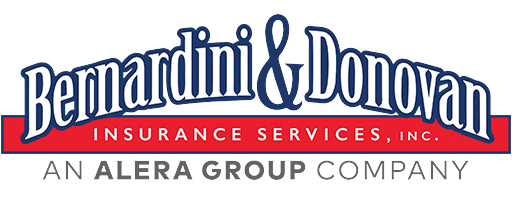In a world of ever-changing medical care, insurance plans might not always cover certain aspects of health such as prescription drugs. This could be a result of someone not feeling the need to have prescription drug coverage, or maybe they can’t afford it.
Whatever the reasons, it’s important to note that insurance coverage rules can vary from state to state. There are several ways that health plans cover prescription drugs if you do opt for that type of coverage: Copays, coinsurance, prescription deductible, integrated deductible, out-of-pocket maximum.
This article will discuss prescription drug coverage, or lack of, and how you can get find a plan that works for your needs.
AN OVERVIEW OF PRESCRIPTION DRUG INSURANCE
Prescription drug spending in the United States grew to nearly $370 billion in 2019, “accounting for nearly 10 percent of total health expenditures,” according to Very Well Health.
Of course, the pandemic likely had a huge effect on these numbers, as more adults found themselves focusing their attention on the health and medical industries due to the financial and medical crises.
In addition, the CDC said that 48.6 percent of adults had used at least one prescription drug within 30 days, with 24 percent having used three or more, and 12.8 percent having used five or more.
COST OF PRESCRIPTIONS WITHOUT INSURANCE
-
The average increase for generic drugs is in the range of 15% annually.
According to the Organization for Economic Co-Operation and Development, Americans spend, on average, about $1,200 each year on prescription drugs. The most popular prescription drugs range in cost from $12.41- $97.57.
You can read more about the cost of prescription drugs in this article.
Given the cost of prescriptions, it’s clear that prescription drug coverage is a significant part of a comprehensive health insurance plan. But as drug prices rise, many insurance companies have put more restrictions on what they will and will not cover.
That means that even Americans who are enrolled in a plan with prescription drug coverage may incur substantial out-of-pocket costs.
FACTORS THAT AFFECT THE COST OF PRESCRIPTION DRUGS
Several factors affect the cost of prescription drugs, including generic or brand-name prescriptions, where you get your prescription filled, and how long you are on the medication.
Read the complete article on Very Well Health to learn more about this topic.
THE DILEMMA: WHEN INSURANCE DOESN’T/WON’T COVER PRESCRIPTION DRUGS
According to Harvard health economist and primary care physician Ben Sommers, “There’s more and more evidence that having health insurance really does improve people’s health, and medications are one of the key parts of that because it is a mainstay of how we manage a lot of chronic conditions.”
But having health insurance doesn’t mean easy access to the needed drugs.
The majority of Americans have health insurance that includes coverage for prescription drugs. But unfortunately that doesn’t ensure that they can afford the specific drugs their doctors prescribe for them, according to an article published by NPR.
This same article highlighted one poll that was released on income inequality: “Many Americans report that their insurance plans sometimes don’t cover a drug they need — and nearly half the people whom this happens to say they simply don’t fill the prescription.”
Continue Reading: When Insurance Won’t Cover Drugs, Americans Make ‘Tough Choices’ About Their Health
So, what happens when an individual’s insurance doesn’t or won’t cover prescription drugs? Well, the individual simply doesn’t buy or take their medication.
In fact, there are experiences of individuals with Medicare who pay for supplemental insurance policies just to cover the cost of the needed drugs — and that’s just for the generic version which typically results in lower quality, less-than effectual results, and out-of-pocket expenses.
For those who prioritize prescription drugs over everything else, there are resources or ways to hone in on this type of coverage.
IN CONCLUSION
While it might be tempting to just give up on trying to get prescription drug coverage, experts say that isn’t the route that should be taken.
“Patients struggling with their health may not understand or have the ability to push back when an insurance company sends a denial,” says Frederick Isasi, director of the consumer advocacy group Families USA. So here are different ways to get prescription drug coverage.
Prescription Assistance Programs:
Prescription assistance programs help patients pay for the medications at an affordable rate. Pharmaceutical companies create them to provide free or discounted prescriptions for those who need them. Patients usually have to apply to receive assistance.
Call different pharmacies:
As stated above, you will oftentimes find that different pharmacies will offer various rates of the same prescription. Therefore, before choosing a pharmacy, you may want to call around to see which pharmacy offers the best price.
Ask for a 90-day supply:
While a 30-day refill option is usually the most common, a study found that getting a 90 day supply of medication can save patients a significant amount of money. However, this option is only appropriate if you are taking maintenance medications.
Use coupons:
Before purchasing your prescription, you can look around for coupons that will save you money. One way to do this is by using MiraRx, where you can look at discounts from different pharmacies in your area and choose the best price.
Standalone Prescription Drug Coverage (Medicare Part D):
Medicare Part D is a type of insurance plan that Medicare beneficiaries purchase to supplement Original Medicare (or to supplement a Medicare Advantage plan that doesn’t already come with built-in Part D coverage.
The plans are called “stand-alone” because they’re purchased on their own, separate from the rest of the person’s health coverage; similar to what was addressed previously, this option is common for an Original Medicare beneficiary, resulting in a Part D plan from one insurer and a Medigap plan from a different insurer, according to the Health Insurance online organization.
You might also hear someone refer to stand-alone prescription drug coverage for people who aren’t enrolled in Medicare, although that’s much less common.
Some things to keep in mind:
-
Original Medicare is the only major type of health coverage that doesn’t include prescription drug coverage, requiring enrollees to purchase supplemental stand-alone drug coverage.
Medicare Part D is true insurance, but in most other cases, if people are buying stand-alone drug coverage, they may be getting a prescription discount program rather than an actual insurance plan.





